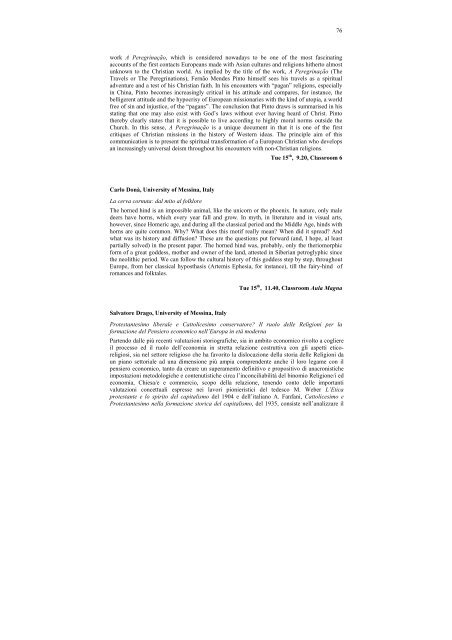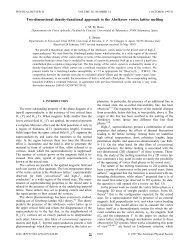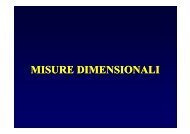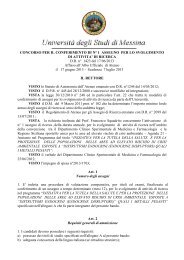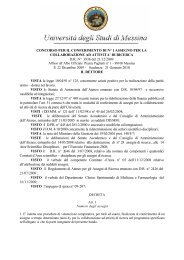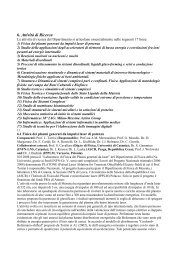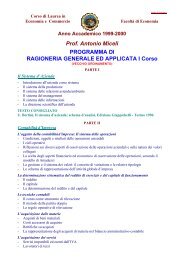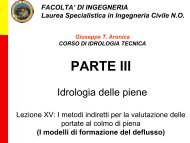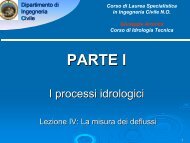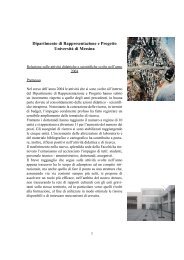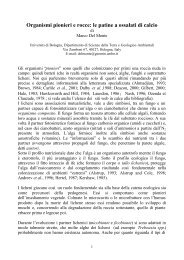PROGRAMME AND ABSTRACTS - Università degli Studi di Messina
PROGRAMME AND ABSTRACTS - Università degli Studi di Messina
PROGRAMME AND ABSTRACTS - Università degli Studi di Messina
You also want an ePaper? Increase the reach of your titles
YUMPU automatically turns print PDFs into web optimized ePapers that Google loves.
work A Peregrinação, which is considered nowadays to be one of the most fascinating<br />
accounts of the first contacts Europeans made with Asian cultures and religions hitherto almost<br />
unknown to the Christian world. As implied by the title of the work, A Peregrinação (The<br />
Travels or The Peregrinations), Fernão Mendes Pinto himself sees his travels as a spiritual<br />
adventure and a test of his Christian faith. In his encounters with “pagan” religions, especially<br />
in China, Pinto becomes increasingly critical in his attitude and compares, for instance, the<br />
belligerent attitude and the hypocrisy of European missionaries with the kind of utopia, a world<br />
free of sin and injustice, of the “pagans”. The conclusion that Pinto draws is summarised in his<br />
stating that one may also exist with God’s laws without ever having heard of Christ. Pinto<br />
thereby clearly states that it is possible to live accor<strong>di</strong>ng to highly moral norms outside the<br />
Church. In this sense, A Peregrinação is a unique document in that it is one of the first<br />
critiques of Christian missions in the history of Western ideas. The principle aim of this<br />
communication is to present the spiritual transformation of a European Christian who develops<br />
an increasingly universal deism throughout his encounters with non-Christian religions.<br />
Carlo Donà, University of <strong>Messina</strong>, Italy<br />
La cerva cornuta: dal mito al folklore<br />
76<br />
Tue 15 th , 9.20, Classroom 6<br />
The horned hind is an impossible animal, like the unicorn or the phoenix. In nature, only male<br />
deers have horns, which every year fall and grow. In myth, in literature and in visual arts,<br />
however, since Homeric age, and during all the classical period and the Middle Age, hinds with<br />
horns are quite common. Why? What does this motif really mean? When <strong>di</strong>d it spread? And<br />
what was its history and <strong>di</strong>ffusion? These are the questions put forward (and, I hope, al least<br />
partially solved) in the present paper. The horned hind was, probably, only the theriomorphic<br />
form of a great goddess, mother and owner of the land, attested in Siberian petroglyphic since<br />
the neolithic period. We can follow the cultural history of this goddess step by step, throughout<br />
Europe, from her classical hyposthasis (Artemis Ephesia, for instance), till the fairy-hind of<br />
romances and folktales.<br />
Salvatore Drago, University of <strong>Messina</strong>, Italy<br />
Tue 15 th , 11.40, Classroom Aula Magna<br />
Protestantesimo liberale e Cattolicesimo conservatore? Il ruolo delle Religioni per la<br />
formazione del Pensiero economico nell’Europa in età moderna<br />
Partendo dalle più recenti valutazioni storiografiche, sia in ambito economico rivolto a cogliere<br />
il processo ed il ruolo dell’economia in stretta relazione costruttiva con gli aspetti eticoreligiosi,<br />
sia nel settore religioso che ha favorito la <strong>di</strong>slocazione della storia delle Religioni da<br />
un piano settoriale ad una <strong>di</strong>mensione più ampia comprendente anche il loro legame con il<br />
pensiero economico, tanto da creare un superamento definitivo e propositivo <strong>di</strong> anacronistiche<br />
impostazioni metodologiche e contenutistiche circa l’inconciliabilità del binomio Religione/i ed<br />
economia, Chiesa/e e commercio, scopo della relazione, tenendo conto delle importanti<br />
valutazioni concettuali espresse nei lavori pionieristici del tedesco M. Weber L’Etica<br />
protestante e lo spirito del capitalismo del 1904 e dell’italiano A. Fanfani, Cattolicesimo e<br />
Protestantesimo nella formazione storica del capitalismo, del 1935, consiste nell’analizzare il


